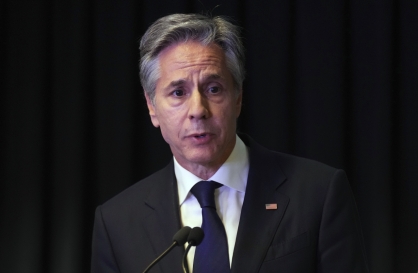
Harvard Professor Ezra Vogel’s 1979 book, "Japan as Number One: Lessons for America," became an instant bestseller in Japan. The flattering title certainly helped sales, but it was the book’s central argument – that the Japanese approach to governance and business were superior to others – that really made a splash.
At the time, Japan was riding high. Its GDP had grown by about 10 percent annually for most of the 1950s and 1960s, and 4-5 percent during the second half of the 1970s – a trend that would continue throughout the 1980s. But Japanese businesspeople and political leaders were not sure whether Japan had succeeded economically because of its unique system or despite it. For them, Vogel’s book amounted to a kind of seal of approval and reinforced the belief that Japan could soon surpass the United States to become the world’s largest economy.
In the years that followed, Japan appeared to be progressing toward this goal. In the second half of the 1980s, Japanese stock prices tripled and real asset prices rose fourfold. In 1988, Japan’s GDP amounted to 60 percent that of the US (in current dollars), and, with a population about half the size at the time, its GDP per capita was significantly higher. In 1995, following a sharp appreciation of the yen, Japan’s economy was about three-quarters the size of the US economy.
That turned out to be the peak for Japan. Soon, the economy was gripped by decades-long stagnation and deflation. From 1995 to 2010, Japan experienced negative GDP growth (in yen terms). Meanwhile, the US economy grew by around 2 percent annually, and China racked up year after year of double-digit growth. Today, Japan’s GDP amounts to just 15.4 percent that of the US, and China’s GDP has been larger than Japan’s since 2010. Far from rising to No. 1, Japan fell to No. 3.
The news that China had surpassed Japan as the world’s second-largest economy did not prompt much of an outcry from the Japanese public, which appeared practically resigned to their economy’s decline. To be sure, Japanese voters had handed the opposition Democratic Party of Japan (DPJ) a victory over the long-dominant Liberal Democratic Party (LDP) the previous year. But the honeymoon with the DPJ did not last long. The party fell far short on governance, diplomacy and economic policy, and from 2009 to 2012, a parade of DPJ prime ministers each lasted barely a year in the position.
In the December 2012 election, Japanese voters tried a different approach, electing the LDP’s Abe Shinzo as prime minister for the second time. Abe quickly introduced a bold economic-policy package – dubbed "Abenomics" – that aimed finally to lift the Japanese economy out of two decades of deflation and recession with three “arrows”: massive monetary easing, expansionary fiscal policy and a long-term growth strategy.
Abe’s plan worked – to a point. Thanks to the Bank of Japan’s monetary expansion, Japan finally achieved a positive inflation rate. But real growth remained elusive, owing to rapid population aging. Though labor productivity increased significantly, the gains were insufficient to offset the decline in the number of workers and working hours. Add to that yen depreciation in 2012-14, and Japan’s GDP declined (in US dollar terms), before flattening out.
Now, Japan has fallen even further: last year, Germany surpassed Japan as the world’s third-largest economy. And, once again, the public reaction to the news of Japan’s declining global position has amounted to a shrug. The kind of constructive anger that can spur dynamic reform is nowhere to be seen.
The list of measures needed to revitalize the Japanese economy is as well-known as it is long. For example, Japan must steer personal bank deposits and institutional savings to equities and alternatives. And productivity increases are sorely needed in every sector – an imperative that should be pursued through aggressive digitalization, given declining population size.
In the meantime, today’s labor shortages should drive up nominal wages, and strong demand for goods and services, as well as the rising costs of inputs, should be reflected in higher prices. This is something of a forgotten art in Japan: Over decades of deflation, as consumers turned on companies that raised prices, the price mechanism became practically nonoperational. Relative and absolute prices froze, and resource allocation suffered.
The good news is that “deflationary mindsets” are changing, not least because the BOJ has managed to keep inflation above its 2 percent target for nearly two years. But ultra-accommodative monetary policy carries high costs. The growing interest-rate differential with the US, where rates rose rapidly in 2022-23, contributed to the yen’s rapid depreciation against the dollar, from 115 yen in January 2022 to 150 yen 10 months later and throughout 2023.
But while the yen’s depreciation vis-a-vis the US dollar might have contributed to Japan’s declining GDP in US dollars, it is not the whole story. After all, a weak currency can often boost growth by making exports more competitive. But there is no sign of this in Japan, which reflects a deeper problem: both innovation and production have largely left the country. Payments to US IT-service companies are rising fast, pushing imports higher. Japan must take urgent and decisive steps to reverse this trend, such as by promoting science and technology education to generate IT-service production domestically.
If the economy’s fall to number four is not enough to wake Japan up, it will soon fall to number five. The International Monetary Fund projects that India’s GDP will overtake Japan’s (in dollar terms) in 2026. To stave off further decline, Japan’s government must devise a clear strategy for raising productivity, expanding the workforce, and allocating scarce labor to the most productive sectors.
By Takatoshi Ito
Takatoshi Ito, a former Japanese deputy vice minister of finance, is a professor at the School of International and Public Affairs at Columbia University and a senior professor at the National Graduate Institute for Policy Studies in Tokyo. -- Ed.
(Project Syndicate)




![[Weekender] How DDP emerged as an icon of Seoul](http://res.heraldm.com/phpwas/restmb_idxmake.php?idx=644&simg=/content/image/2024/04/25/20240425050915_0.jpg)


![[KH Explains] No more 'Michael' at Kakao Games](http://res.heraldm.com/phpwas/restmb_idxmake.php?idx=644&simg=/content/image/2024/04/28/20240428050183_0.jpg)